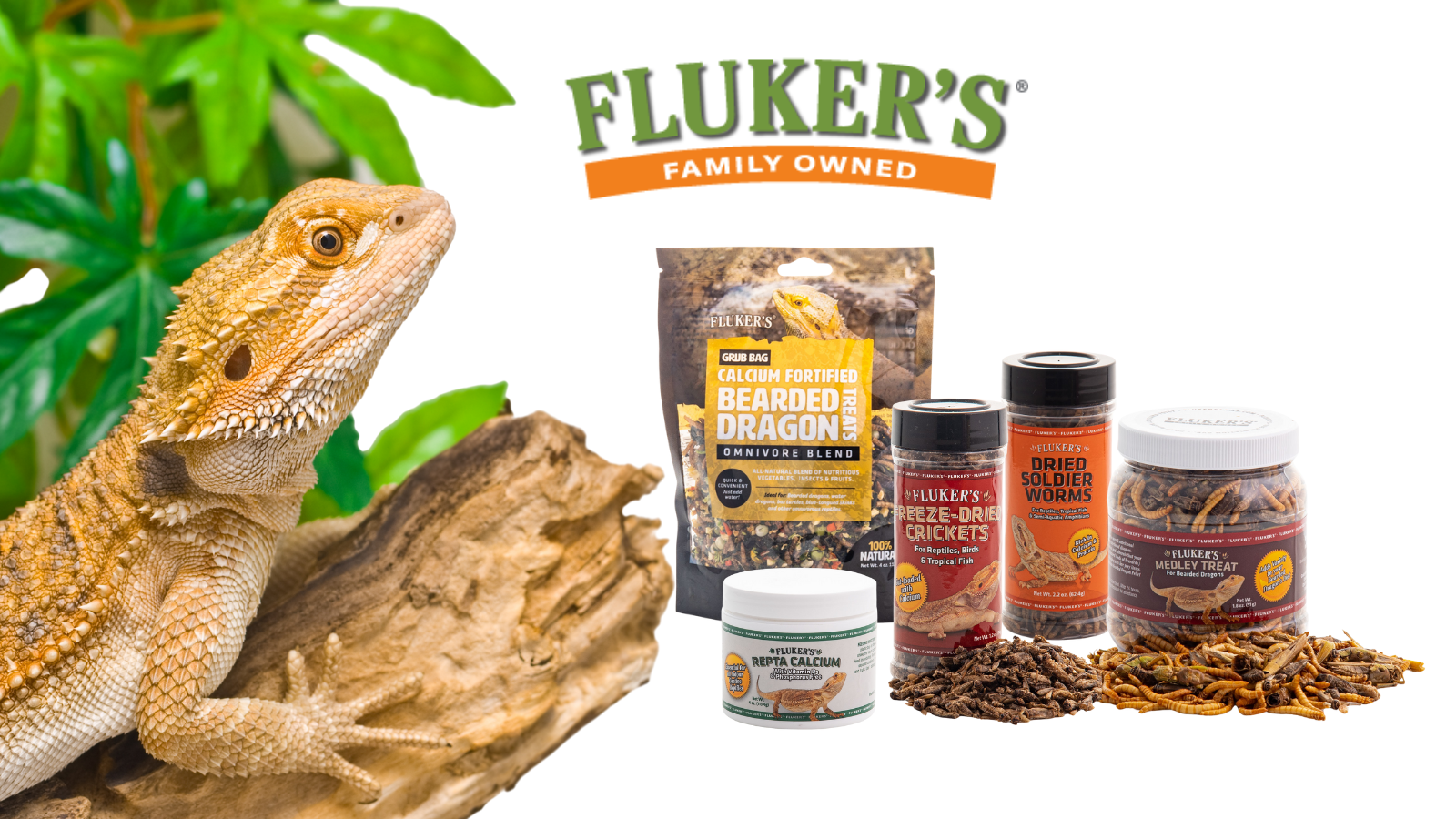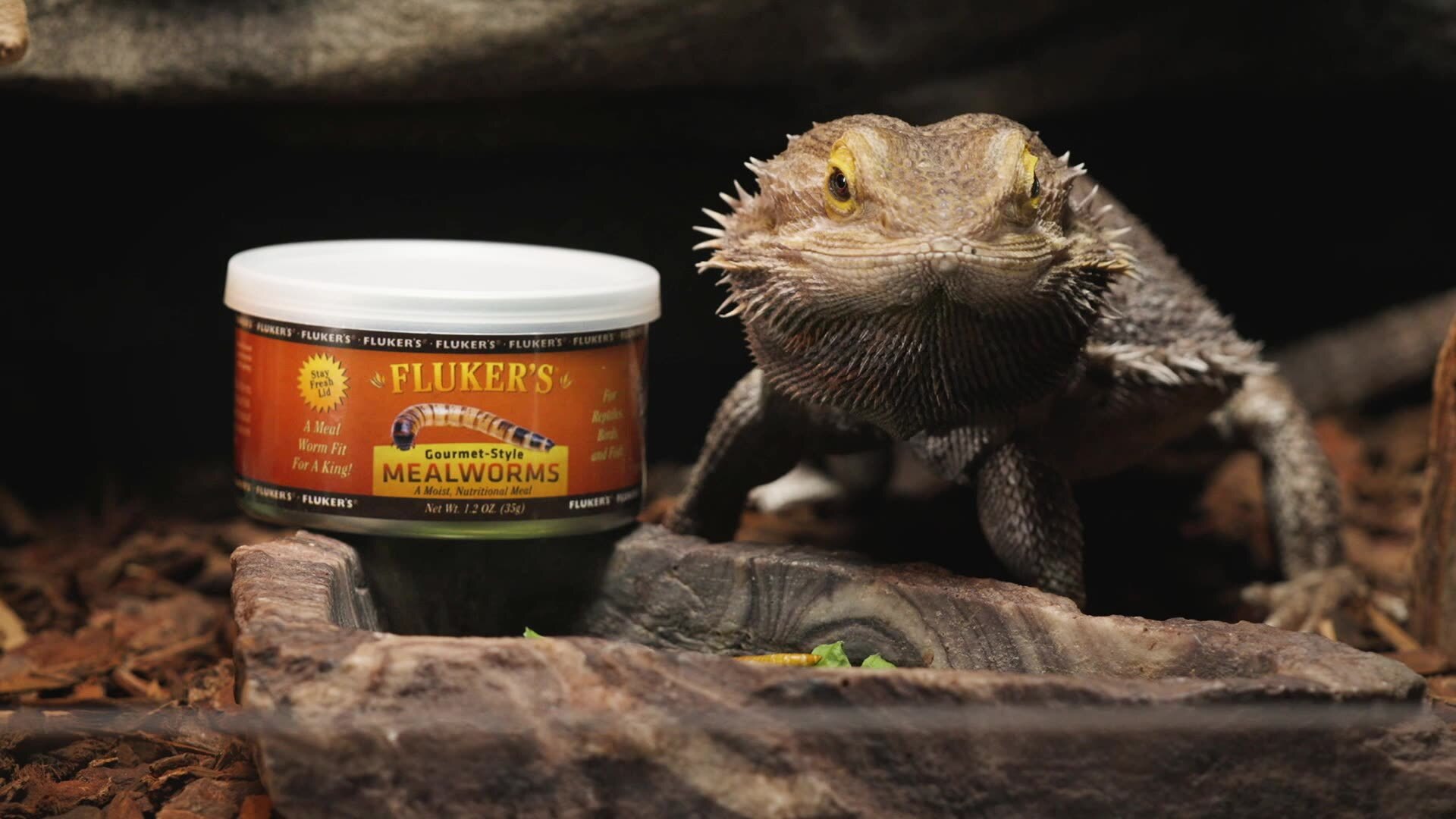
Dried commercial food items have become a popular feeding choice for many pet owners. These food choices are ideal for those who do not want the hassle or maintenance of live prey. Fluker's has put together a few simple tips to help aid your reptile transition from live to dried or commercial food. About half of all reptiles will readily take to dried or commercial foods; the other half will need a little encouragement.
Start slowly; your pet will need some time adjusting to the new food. Start by adding a small amount to the current food of your reptile. Every couple of days, add a larger amount until the transition is complete. Be sure to add water or fruit for added hydration in the environment to compensate for the loss of fluids found in live prey.
Another transition method with a high success rate is to mix the dried or commercial food with fruits or vegetables. Make sure to check the daily intake of fruits and vegetables for your reptile before mixing. Some can be harmful! You can also mix the dried prey with baby food (such as peaches or bananas) to persuade him to eat.
If your reptile is tame enough to feed by hand, you can wiggle the dried food in front of him to give the impression of live prey.

Here are five common myths about dried insects:
1. Myth: Dried insects are nutritionally inferior:
Some believe that dried insects lose all their nutrients during processing. However, high-quality whole oven-dried or whole freeze-dried insects retain essential proteins, fats, and minerals, though they may need additional supplementation like calcium.
2. Myth: Reptiles won’t recognize or eat dried insects:
While live prey is often more stimulating, many reptiles can be trained to eat dried insects.
3. Myth: Dried insects are unnatural for reptiles:
Although live prey is more natural, dried insects can still provide valuable nutrition and variety, simulating some aspects of a wild diet when balanced properly.
4. Myth: Dried insects are hard to digest:
Some assume dried insects are tougher for reptiles to digest, but most reptiles can digest them just as easily as live insects. A reason why many animals take in live insects and plants is because that is where they obtain their moisture. Make sure to provide them with plenty of water, or other moisture-rich foods, alongside the dried insects
5. Myth: Dried insects cause dehydration:
It’s a common misconception that feeding dried insects can lead to dehydration. This can be easily avoided by providing fresh water and including moisture-rich foods in the diet.
Adding dried insects to a reptile’s diet offers several benefits:
1. Nutrient-Rich: dried insects are packed with protein, healthy fats, and essential nutrients like calcium, helping to support growth, muscle maintenance, and overall health.
2. Convenience and Shelf-Life: Unlike live insects, dried insects are easy to store, have a long shelf-life, and don’t require live feeding, making them a convenient option for pet owners.
3. Variety and Enrichment: Including insects in the diet introduces variety, which can keep reptiles engaged and can mimic the diverse diet they would have in the wild.

